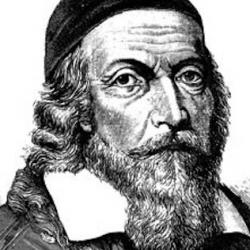Near the beginning of his The Metaphysical Foundations of Modern Science , EA Burtt contrasts medieval with modern science. The difference is mainly to do with their different assessments of the place of man in nature. For medieval thinkers nature was “subservient to man’s knowledge, purpose, and destiny” (24). This was evident in the way they answered questions large and small. Instead of considering man a passive recipient of sense data, for instance, “Man was believed to be active in his acquisition of knowledge – nature passive.” We see, for instance, not because something comes from the object to the eye, but because “something proceeded from his eye to that object” (18). Similarly, they naively believed that their senses accessed reality: Water, ice, and steam must be different things because they appeared different. Medieval science led to many conundrums. Heat and cold were substances, they thought, so they had trouble explaining how the same water could be “hot to one hand and cold to the other” (18).
But modern science doesn’t so much set out to solve these problems but to propose a new vision of man in nature:
“it has become natural to view [nature] as existing and operating in her own self-contained independence, and so far as man’s ultimate relation to her is clear at all, to consider his knowledge and purpose somehow produced by her, and his destiny wholly dependent on her” (24).
Burtt intriguingly characterizes modern philosophy as an effort to restore man’s role in nature: “Modern metaphysics, at least beginning with the work of Berkeley and Leibniz, has another and more significant connecting thread than that of its epistemological interest; it is in large part a series of unsuccessful protests against this new view of the relation of man to nature. Berkeley, Hume, Kant, Fichte, Hegel, James, Bergson – all are united in one earnest attempt, the attempt to reinstate man with his high spiritual claims in a place of importance in the cosmic scheme.” (25). This is an arresting description of modern philosophy – not an edifice against skepticism, but varieties of humanism. Idealism begins to look less loopy.
None of these efforts was successful, and Burtt thinks that it is because of the paradigm shift brought by science. In the wake of science’s ascent, things were no longer discussed in terms of substance, accident, cause, essence, matter and form, potentiality and actuality, but in the terminology of science – forces, motions, laws, changes in space and time. For scholastics, “Spatial and temporal relations were accidental, not essential characteristics” but in modern philosophy time and space become “big puzzles” (26-27).
Given this shift in terminology and in the meaning of terms, philosophers have been unable to “think a correct philosophy of man.” Burtt suggests that “it might be that under cover of this change of ideas modern philosophy had accepted uncritically certain important presuppositions, either in the form of meanings carried by these new terms or in the form of doctrines about man and his knowledge subtly insinuated with them – presuppositions which by their own nature negatived a successful attempt to reanalyze, through their means, man’s true relation to his environing world” (27).
Burtt’s aim is to identify and bring to light the sometimes hidden metaphysics of modern science, and to expose them to scrutiny. The scrutiny is sharp, sometimes quite funny. His argument against Cartesian/Newtonian mind-body dualism is classic. He questions the notion that perceptions and sensations are in the brain. He’s pretty sure, though, that when he pricks his finger he feels it in his finger, in spite of the fact that he’s told that the sensation runs up his nerves and actually happens in his brain.
“Surely,” he argues, “we have somewhere run off the track of sane thinking. Is it because we have failed to distinguish between sensed qualities and characters of real objects to which they correspond, the former existing in the brain of the perceiver and the latter in the external world? But what be meant by characters of real objects if they be something existentially quite different from sensed qualities? What can be meant by correspondence between the two? How can that correspondence be verified if only one term of the relation ever comes within the realm of perception? In practice we correct dubious perceptions by appealing to further perceptions; we never correct them by comparison with something unperceived. And, more challenging still, what can be the relation between the space of real objects and the space of perception? Both seem to be infinite and to contain all the room there is; even the space of perception seems to contain my body as a very small object within it. But on this theory the whole of it must be enclosed within my real brain. How vast a thing the latter must be! The greatest distance that I cam measure by any sensible materials or tools must span only a small fraction of my own brain, for all such measurements are within the spatial world of my perception. Stranger still, the brains of other people seem to be very minute as compared with my own; they are but tiny portions of the perceived space all of which exists within my own brain. And on the same assumptions they make equally polite comparisons of my brain with theirs. Something must be off the track again. Or is the brain that I perceive in another man’s head but an insignificant point within his own real brain? It is such a point within mine, and mine is the same within his. What then is the spatial relation between his real brain and mine? Which includes the other, and why?” (316-7).
Any attempt to combine realism and dualism is stymied by these questions. The way forward, Burtt thinks, is to abandon the assumptions: “The space of perception is too much like the space of real objects to reveal any essential difference from it.” Perceptive space has to be freed from illusions, private images, and “other experiences lacking social objectivity,” but once that happens, what is there to prevent it to be considered as real space? And at that point, “there seems no longer any excuse for maintaining the distinction between sensed qualities and the real characters to which they correspond.” In short, “a radically different theory of mind is required to construe the situation in this fashion and make the fundamental structure of scientific knowledge more than unintelligible nonsense” (317).














